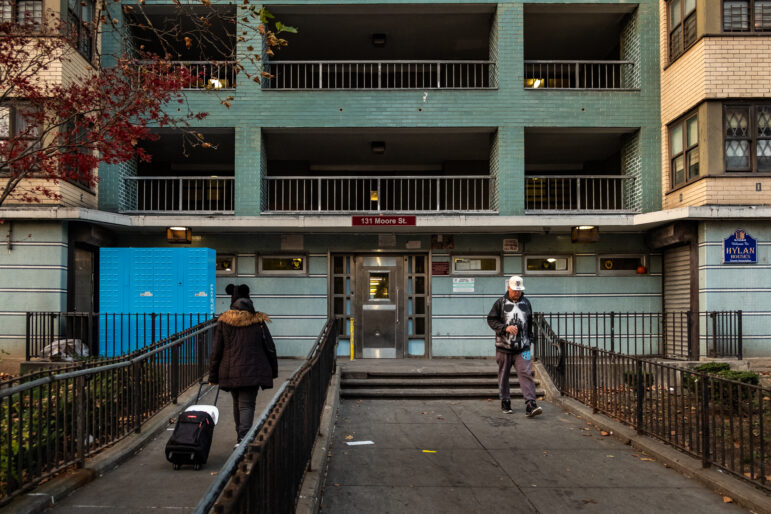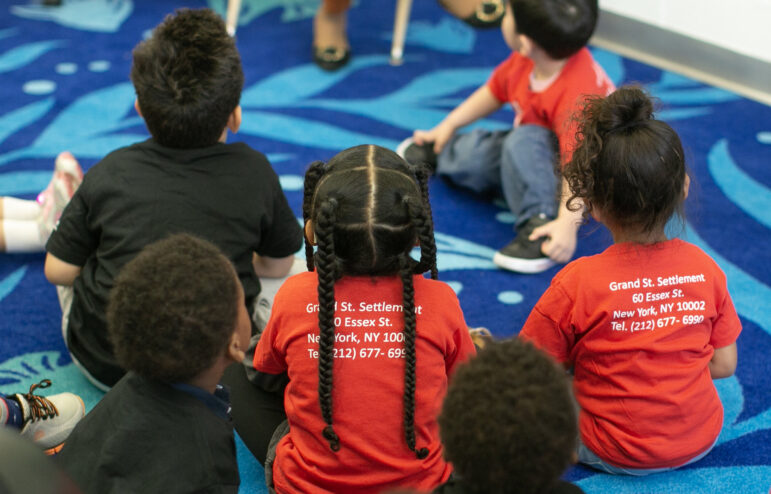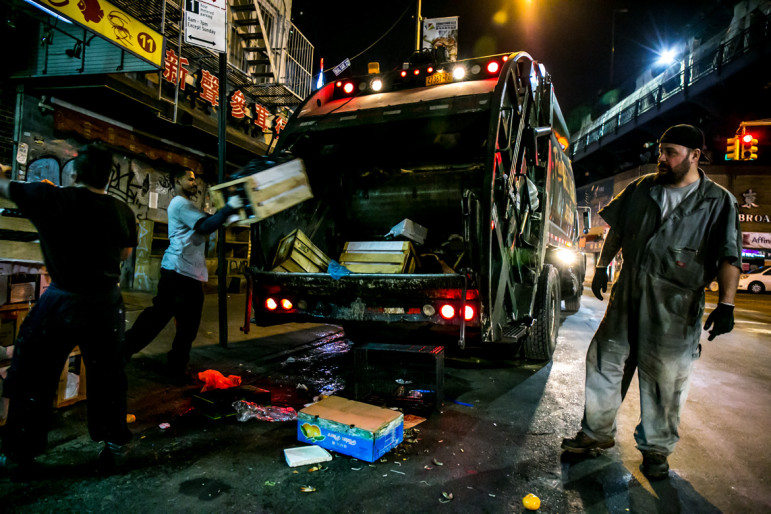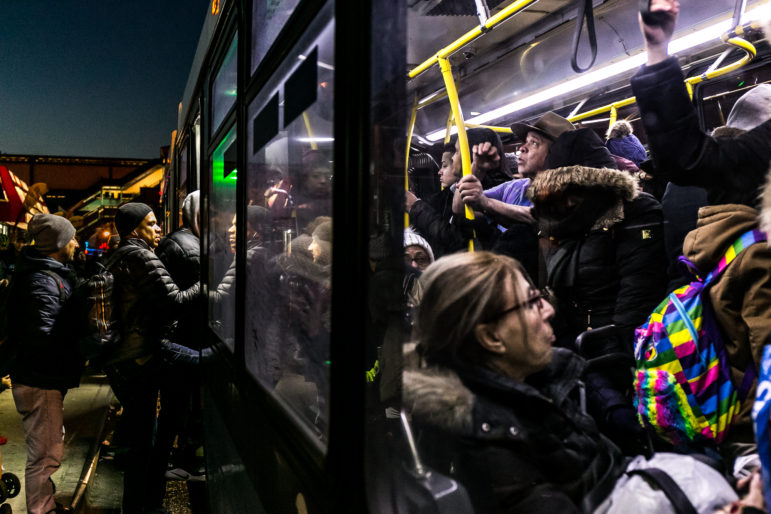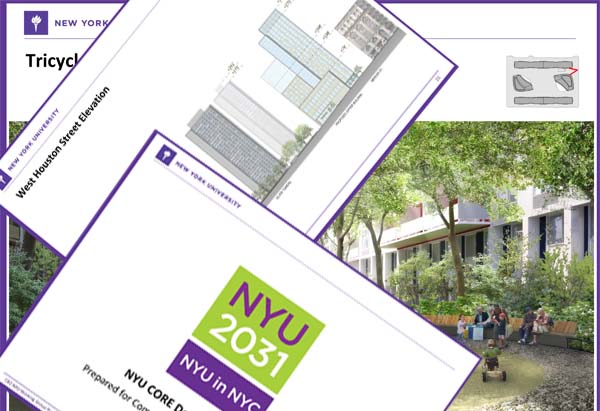 here” width=”600″ height=”400″>
here” width=”600″ height=”400″>
Photo by: Courtesy CB2 website display of NYU documents
Pages from an NYU project overview filed with Manhattan Community Board 2. To see the actual document, click here
A heated exchange between New York University and residents of its surrounding Greenwich Village community has been gaining volume ever since the school’s NYU 2031 expansion effort was unveiled in April 2010.
The proposal, which comprises 2.45 million square feet of development on the two “superblocks” just south of Washington Square, was unanimously rejected by Manhattan’s Community Board 2 in late February, after months of well-attended board meetings, all dominated by vocal residents rallying against the school’s long-term construction plans.
The development would provide a mixture of uses for NYU, from academic to housing to retail. Most of the new capacity would come in the form of four new high-rise buildings along with significant below-ground development. NYU says the current site of a school-owned supermarket would be given to the city for a new public school, and has argued that it will provide more usable public space with better accessibility along the superblocks’ perimeter.
Opponents have seized on different aspects of the 2031 concept, from the impact of living near a construction zone for years to come, to the possibility that the university’s plans for public open space will change or fall through, to the sheer size of the proposed buildings.
“We’re reaching a tipping point in the neighborhood where the university has become more and more of an overwhelming presence in more and more of the neighborhood,” says Andrew Berman, executive director of the Greenwich Village Society for Historic Preservation. “If the Village loses its wonderful, longstanding mixture of people and institutions and uses, then it’s really not going to be the Village anymore.”
On the other hand, John Beckman, NYU Vice President of University Relations and Public Affairs, insists the plan “seeks to maximize the use of NYU’s existing footprint for new development by using land NYU already owns … while avoiding tenant dislocation and the use of eminent domain.”
The school’s past development track record could very well be a factor in the distrust that has greeted NYU 2031. To get a sense of how that record looks from the perspective of NYU’s neighbors, we talked to people living and working near recent NYU development sites:
Wilf Hall, 133-139 MacDougal Street
“I have never been a knee-jerk detractor of NYU,” says Vittorio Antonini, owner of La Lanterna Caffe on the corner of MacDougal and W. 3rd. “I’ve always sort of said, ‘Hey, NYU sort of forms a natural component of the community down here in Central Greenwich Village.’ I’ve always seen them as a good presence.”
However, over the duration of the two years Antonini dealt with NYU’s development of Wilf Hall a couple doors down from his business, he came to resent the way the school dealt with the surrounding area. During the 2008-2010 construction period, he reports losing 20 to 25 percent of his business, and although business was restored to its normal level in 2011, Antonini says the negative effects and aggravation would have been eased if NYU had practiced what they preached.
“They said they weren’t going to close the street [during construction] and then they did,” he says. “What it was, was sort of like the death of a thousand cuts. ‘We’re gonna work with you,’ [they’d say]. ‘We’re gonna do this. We’re not gonna close the street. Oh, we had to close the street… We had to shut off the water service, we had to do this and that.'”
As construction wore on, Antonini became more and more cynical about the things NYU was saying, and continued to say, about the importance of the surrounding community.
“I found myself slowly saying, ‘It’s all lip service,'” he says. “They’re actually not willing to do anything. They’ll do it if it’s not costing them anything… but otherwise they’re not doing a thing.”
Banking on his experience as a developer outside his work at La Lanterna Caffe, Antonini insists that NYU could have handled the construction better, and remains wary of any development promises the school has for the future.
Beckman, however, points to Wilf Hall as a recent success in NYU development, saying that NYU declined to develop the last 20 percent of the building’s floor area ratio in a respectful gesture to the community, while also pointing to the restoration of the Provincetown Playhouse within the building, which provides a “state-of-the-art working theatre in the neighborhood.”
In terms of aesthetics, even Antonini admits that the construction improved the building’s look and usefulness, although he is, of course, more concerned with the price he and others on the street paid for that new look.
Founders Hall Dormitory, 120 E. 12th Street
Berman, often a harsh critic of NYU and its development proposals, gets particularly perturbed when discussing the Founders Hall dormitory that was opened up a couple blocks south of Union Square for the Fall 2009 semester (construction had begun in July of 2006). It was constructed on the site of St. Ann’s Church, which was built in 1847. The property was sold in 2003 by the Archdiocese of New York, and most of the structure was torn down in 2005. NYU bought the land and angered several of the neighbors with the university’s developing skyward while leaving the fa


